Tech
How AI Assistants Are Quietly Shaping Our Future
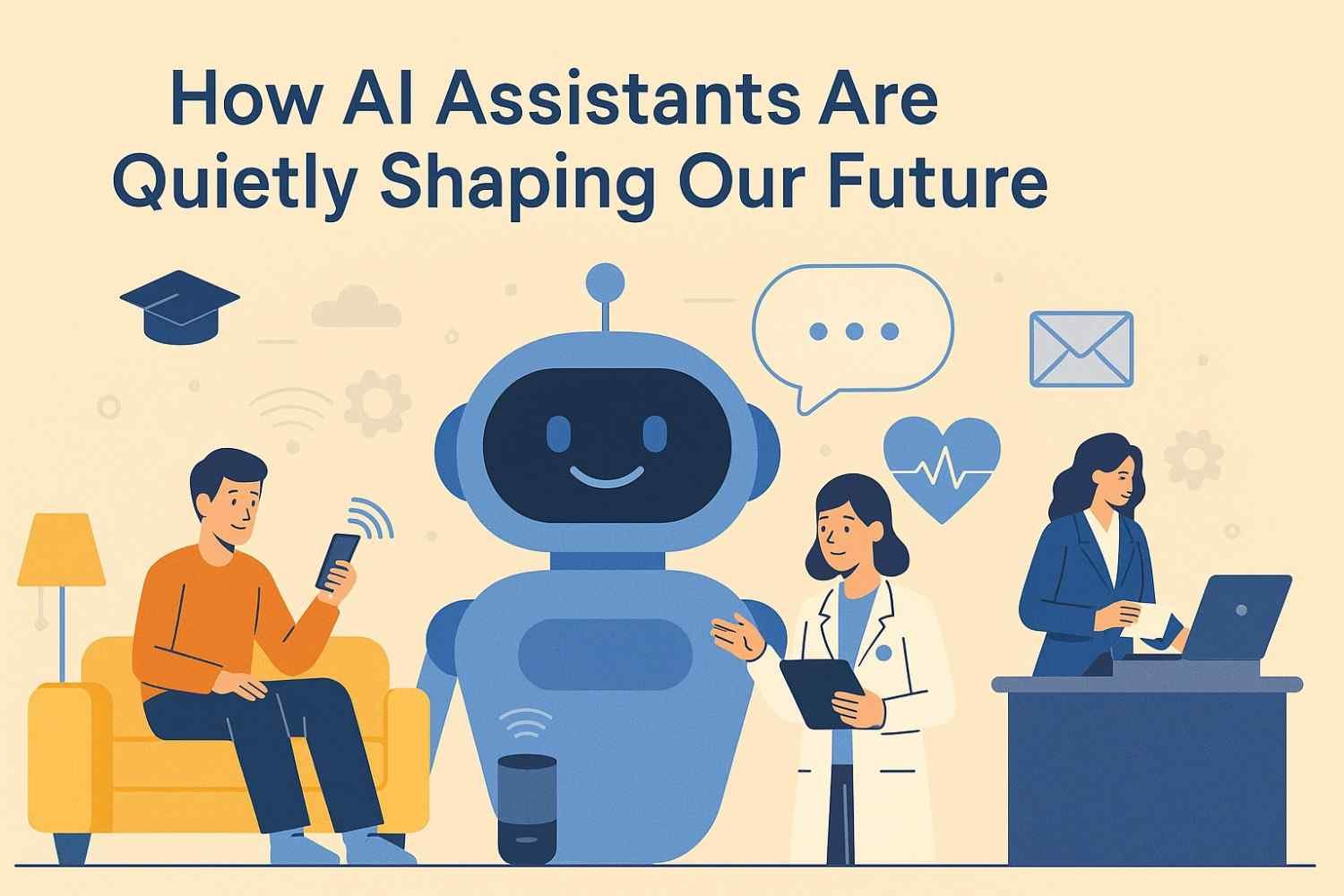
Artificial Intelligence (AI) assistants are becoming an important part of daily life. These virtual helpers are found in smartphones, computers, home devices, cars, and even in workplaces. AI assistants do not make big announcements, but they are quietly helping people in many areas without making much noise. This article explores how these assistants are shaping our future in simple ways. It covers personal use, business support, education, health, and more. These systems are improving how we live and work, step by step.
Understanding What AI Assistants Are
AI assistants are software tools designed to understand and respond to human language. They use natural language processing (NLP) to hear commands, machine learning to learn from past inputs, and artificial intelligence to give answers or complete tasks. Examples include Siri from Apple, Alexa from Amazon, Google Assistant, and Microsoft’s Copilot. These systems are not just answering questions—they are taking actions based on our requests. They can set reminders, write emails, turn off lights, or even help in creating business reports.
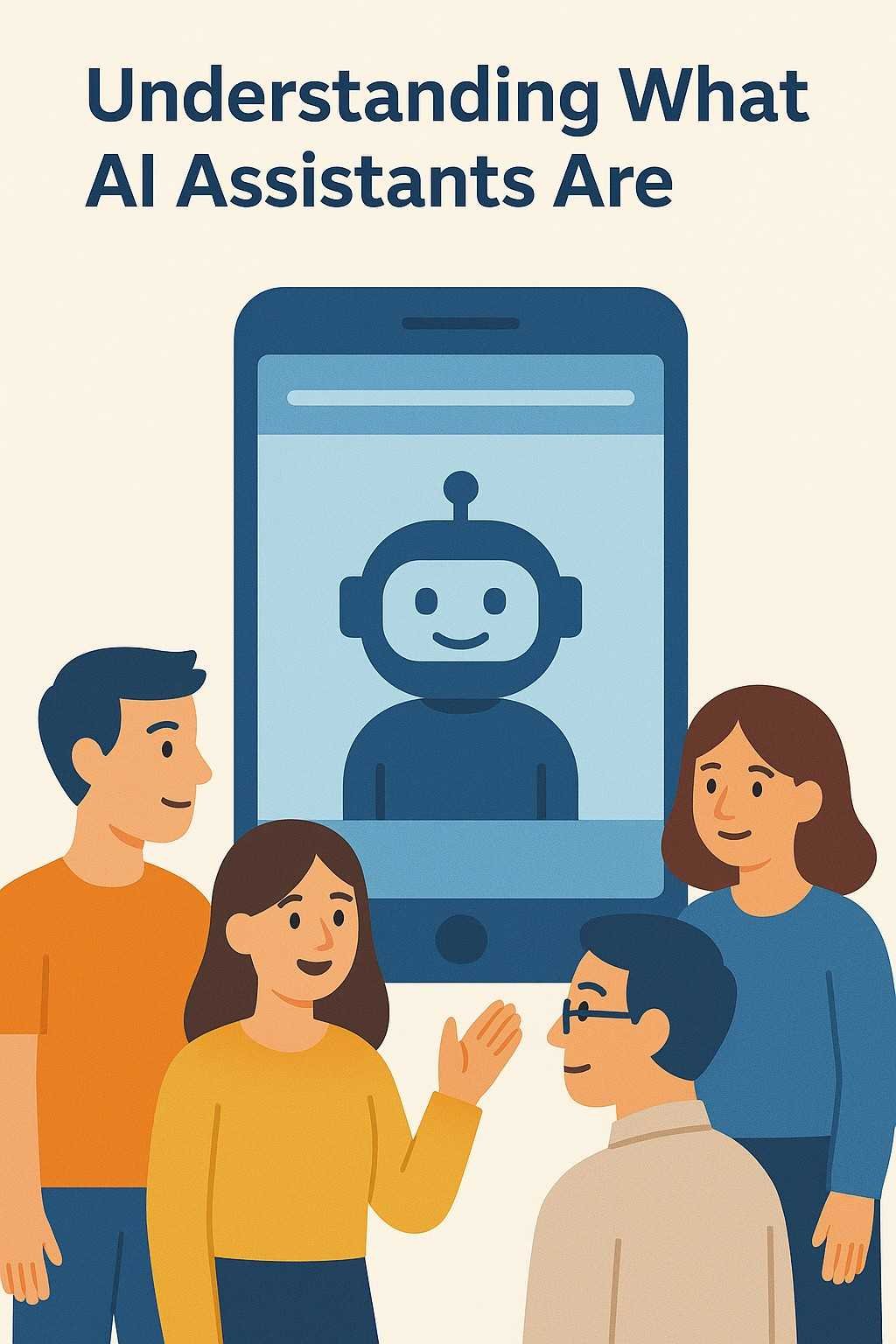
Personal Use: Making Daily Life Easier
One of the main ways AI assistants are shaping our future is by helping with everyday tasks. In homes, people use voice commands to play music, check the weather, create shopping lists, or control smart home devices. For example, saying “turn off the bedroom lights” to a smart speaker will do it right away. This creates comfort and saves time.
Smartphones are another place where AI is active. Users can ask the assistant to send texts, make calls, or look up directions while driving. This reduces the need to touch the phone and helps avoid distractions.
Many people also use AI assistants to manage their calendars. They remind you of meetings, birthdays, and even when to take a break. These tasks may seem small, but they add up to make life more organised.
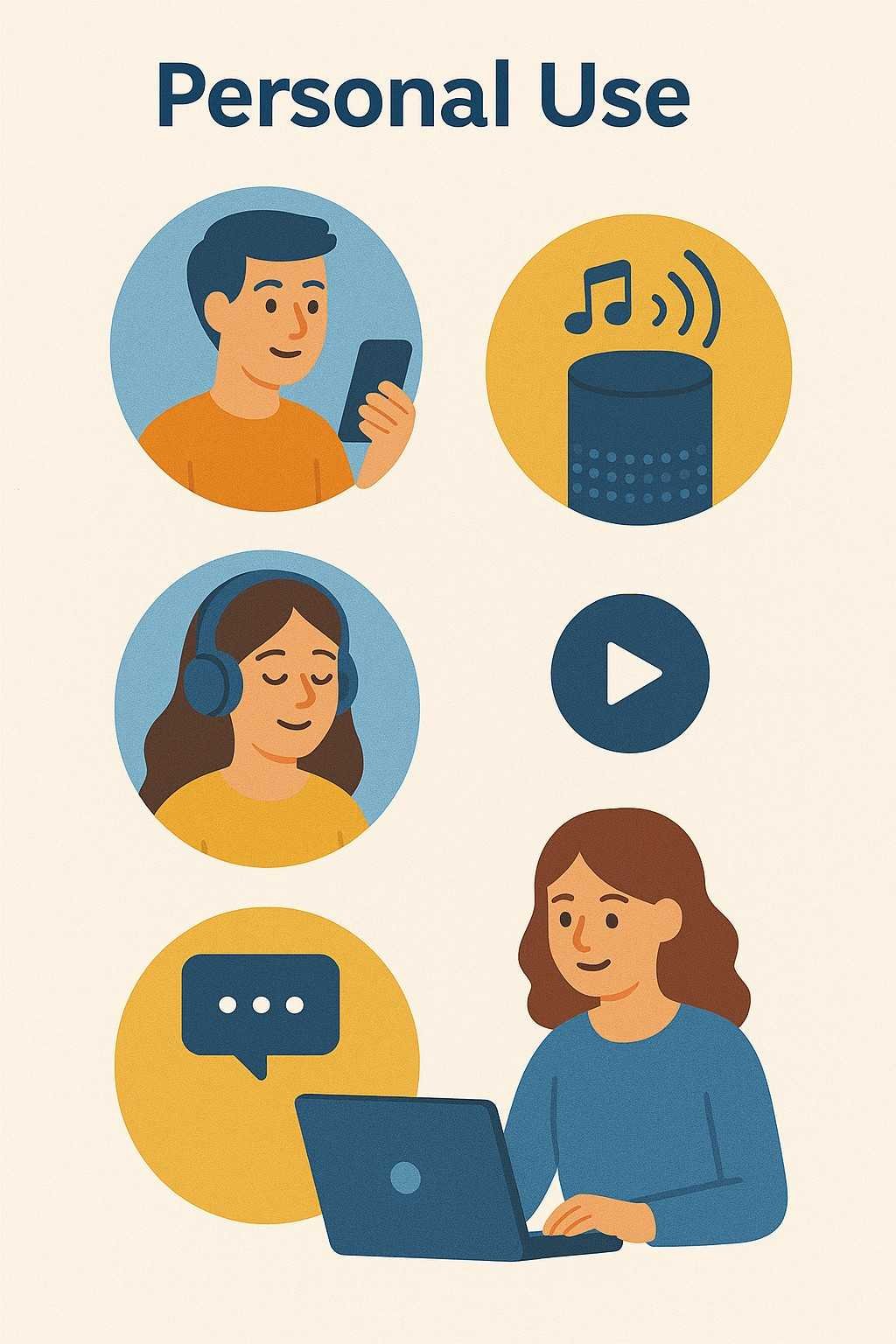
In Education: Supporting Students and Teachers
AI assistants are helping students learn better. They can explain concepts, translate languages, and even help with homework. Some education platforms use AI to track student progress and offer personalised study plans. Students who need extra help in maths or language can get explanations without waiting for a teacher.
For teachers, AI tools help in grading, planning lessons, and answering common student questions. This saves time and allows more focus on the actual teaching part. AI chatbots in schools or universities answer student questions at any time, even outside school hours.
Online courses also benefit from AI. Some platforms adjust the course material based on the learner’s speed. If someone learns quickly, they get harder tasks. If they struggle, they receive simpler lessons or extra help. This is shaping a new style of learning that is flexible and supportive.
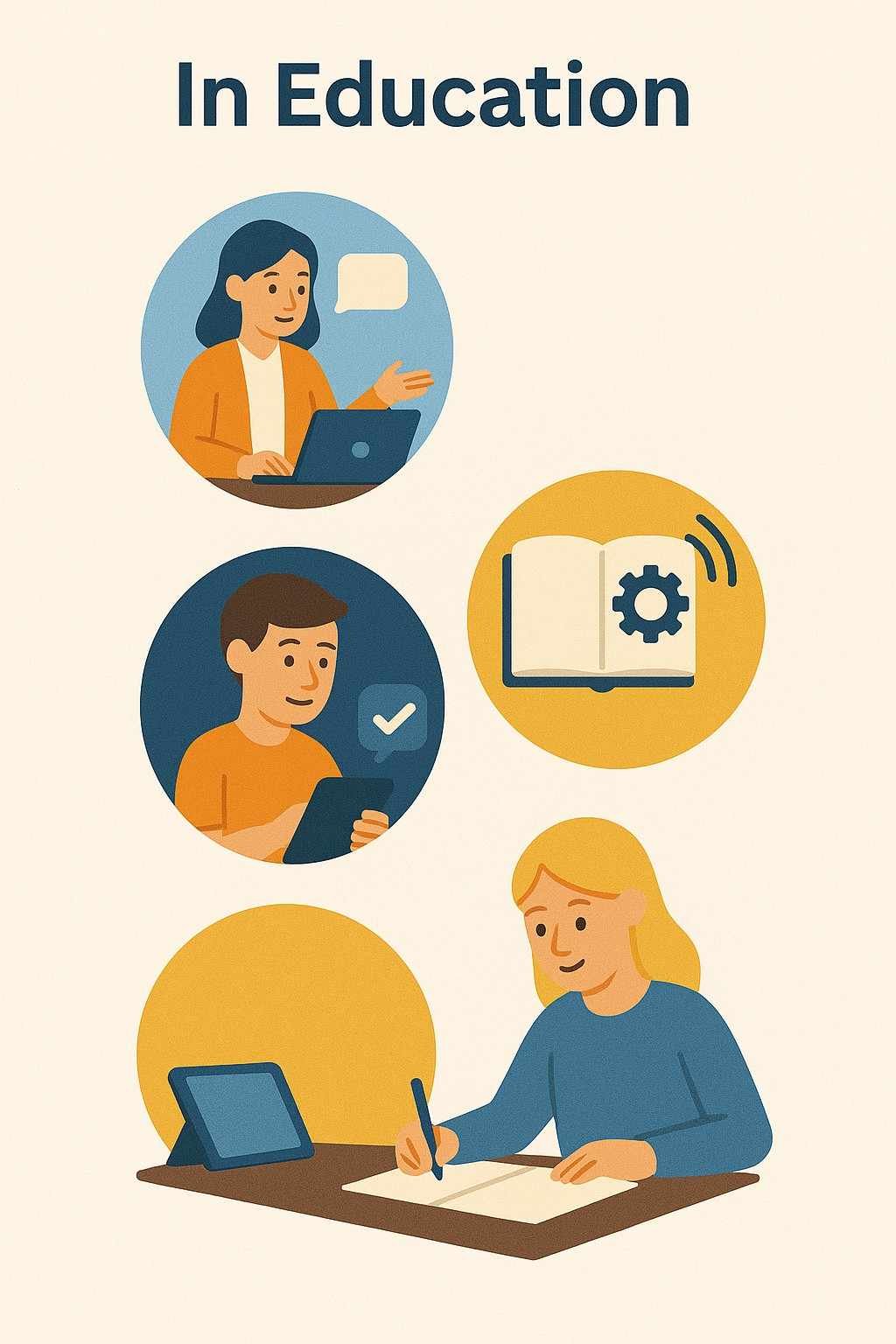
In Healthcare: Helping Doctors and Patients
AI assistants are also making a difference in healthcare. Virtual assistants can remind patients to take medicines on time. They also allow patients to check symptoms before visiting a doctor. This helps in early detection of health problems.
In hospitals, AI tools help doctors by checking large amounts of patient data. They can suggest possible diagnoses or help schedule surgeries. This saves doctors time and improves the chances of good patient care.
For example, voice-activated assistants are used in operating rooms to access medical records without touching any screen. This reduces the risk of infection and keeps focus on the patient.
Some mental health apps use AI to talk to people and offer basic support. While they do not replace therapists, they give users a way to express feelings and receive help immediately.

In Workplaces: Changing How Businesses Operate
Many companies are now using AI assistants to manage daily tasks. These include scheduling meetings, replying to emails, setting reminders, and even drafting documents. This frees up time for human workers to focus on creative or critical tasks.
Customer service has also been transformed. Many websites now use AI chatbots to respond to customer queries. These bots can handle thousands of users at once, 24/7, and provide fast help. If a bot cannot answer, it passes the case to a human agent. This setup makes customer support quicker and more efficient.
Some businesses also use AI for writing reports, creating presentations, and analysing data. AI tools read large amounts of data and give summaries that save hours of work. This improves decision-making and helps businesses grow.
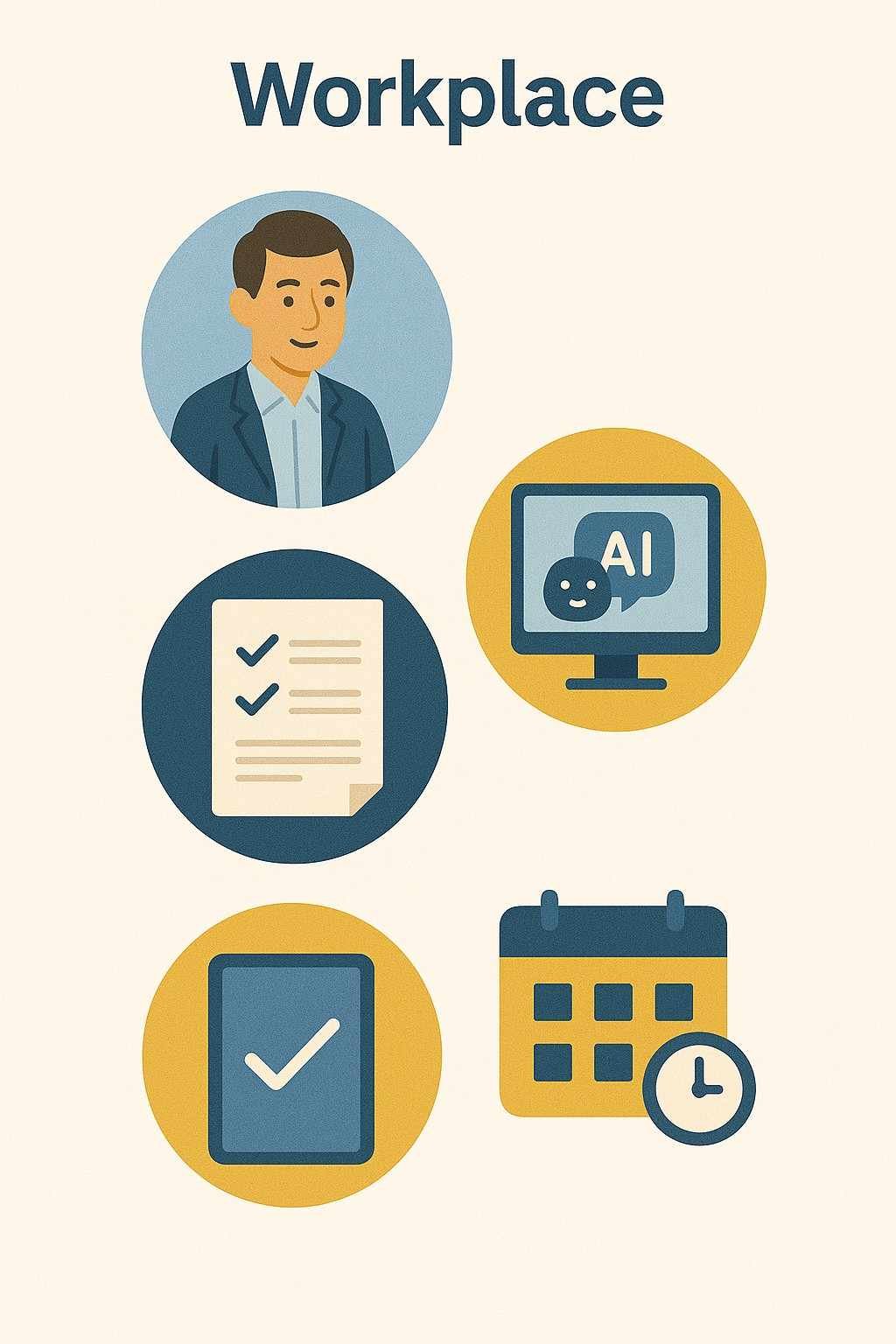
In Homes: Creating Smart Living Spaces
AI assistants are becoming central to smart homes. These homes use connected devices that work with AI systems. Lights, thermostats, security cameras, and kitchen appliances can be controlled by voice or mobile apps.
For example, people can say “turn on the oven at 6 pm” or “lock the doors” without touching anything. AI assistants also learn habits and suggest actions. If you always turn on the heater at 7 am, your assistant might do it automatically in the future.
These systems also help reduce energy use. If no one is in a room, lights are turned off. Thermostats adjust based on the weather and your presence. Over time, this saves money and helps the environment.
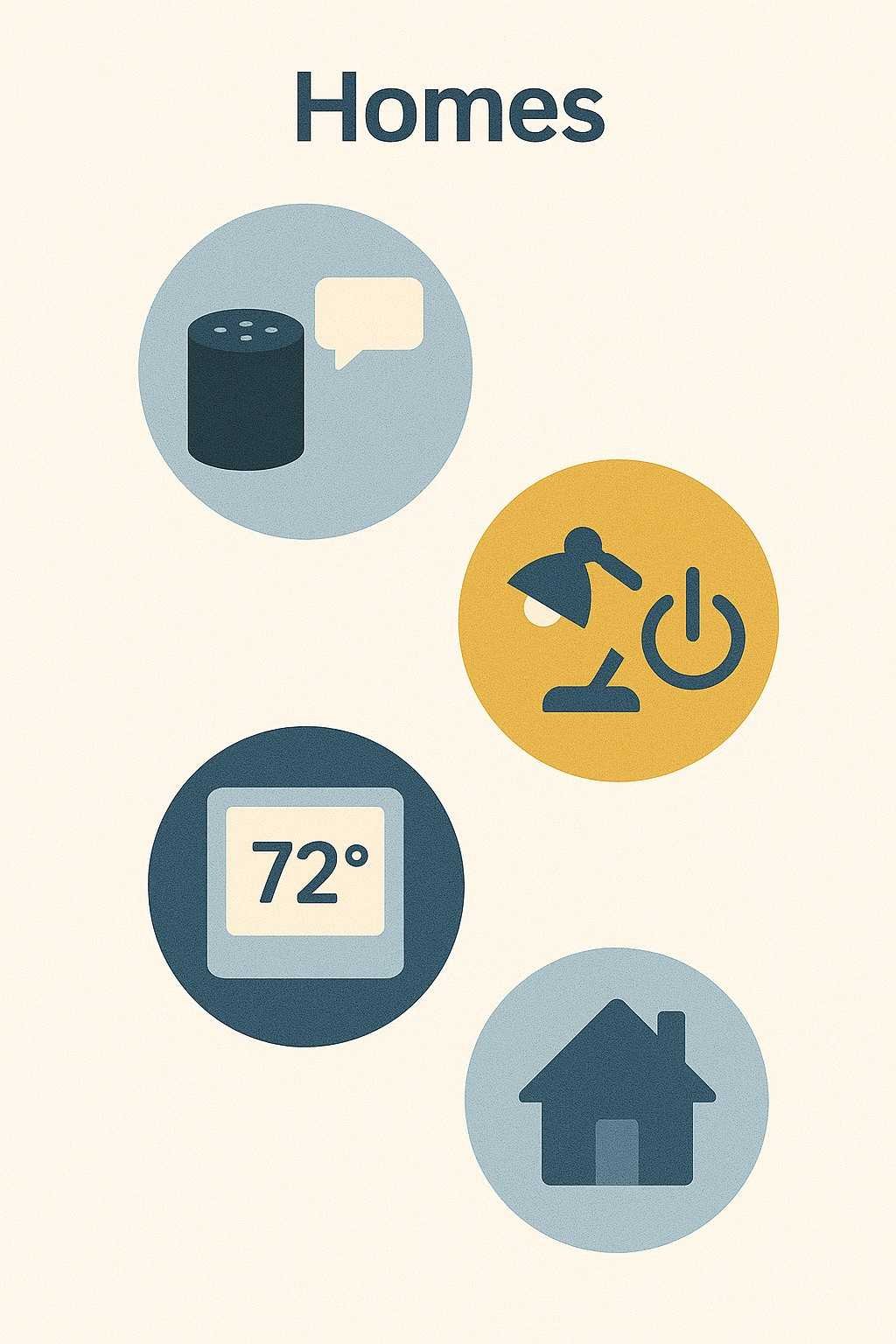
In Communication: Breaking Language Barriers
AI assistants also help in translating languages. This is useful for travellers, students, or anyone working with people in different countries. You can speak in your language, and the assistant will respond in another language.
Some voice assistants are now used in call centres to help agents talk to customers in different languages. They can listen, translate, and speak back, making global support more possible.
This ability to translate in real time also helps people connect better. It removes the fear of not understanding each other and opens new chances for business, education, and friendships.
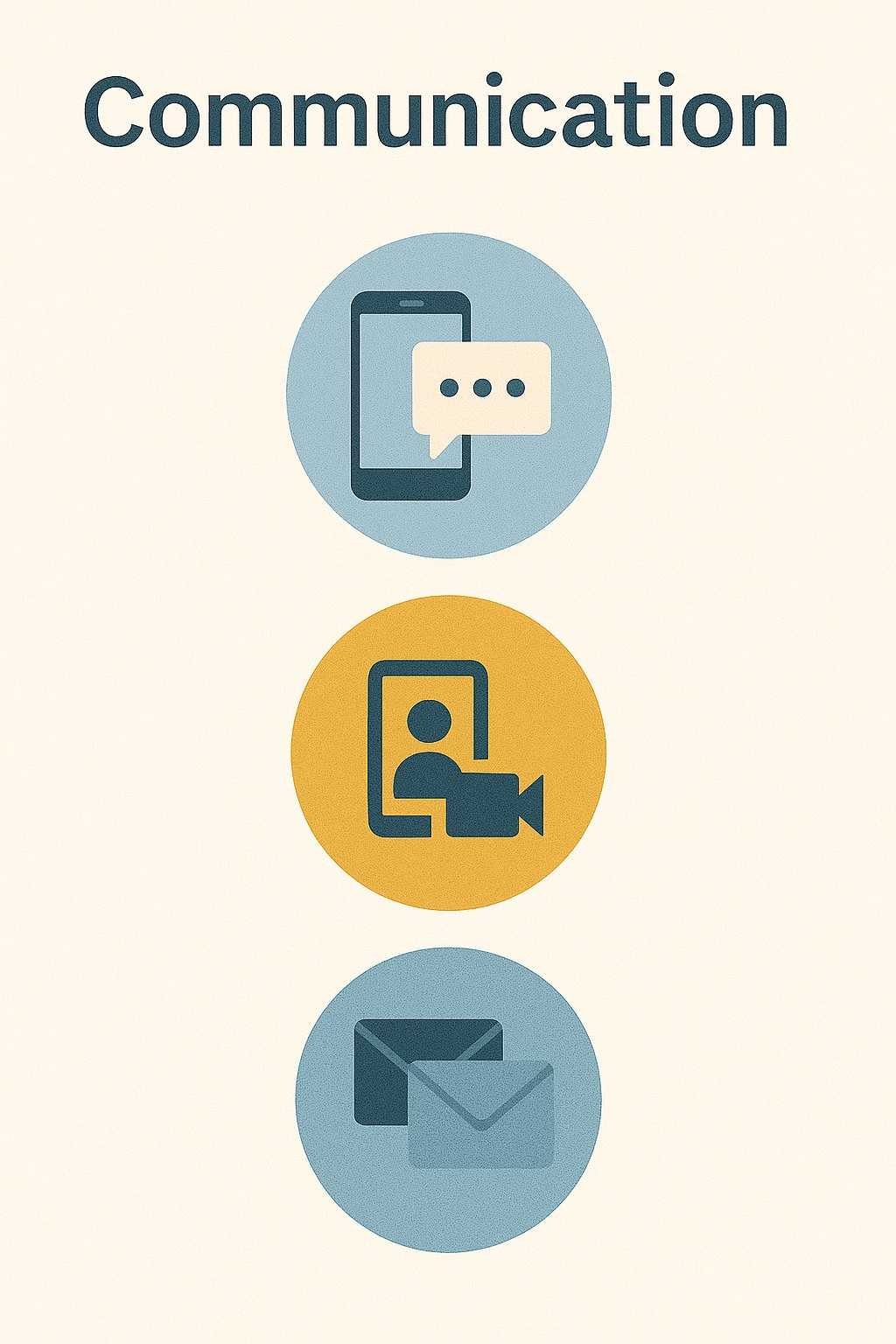
Privacy and Safety Concerns
While AI assistants are helpful, they also raise concerns. These tools collect data to give better answers. But many users worry about how this data is stored and used. Companies promise to keep data safe, but users must also be aware of what they share.
For example, AI assistants may always be listening for a command, which can lead to accidental recordings. It’s important for users to check settings, read policies, and know how to delete stored data.
Governments and tech companies are now working on stronger rules to protect users. This includes better privacy settings, safer storage, and more open information about what AI assistants are doing.
Job Changes and Automation
AI assistants are not taking all jobs, but they are changing some of them. Simple tasks like data entry, basic customer support, and appointment setting are now done by AI. This means some jobs are reduced, but new roles are also created.
People now need to learn how to work with AI tools. Skills like managing AI systems, training them, or using them for smarter work are now important. Training programs are being created to help workers prepare for this future.
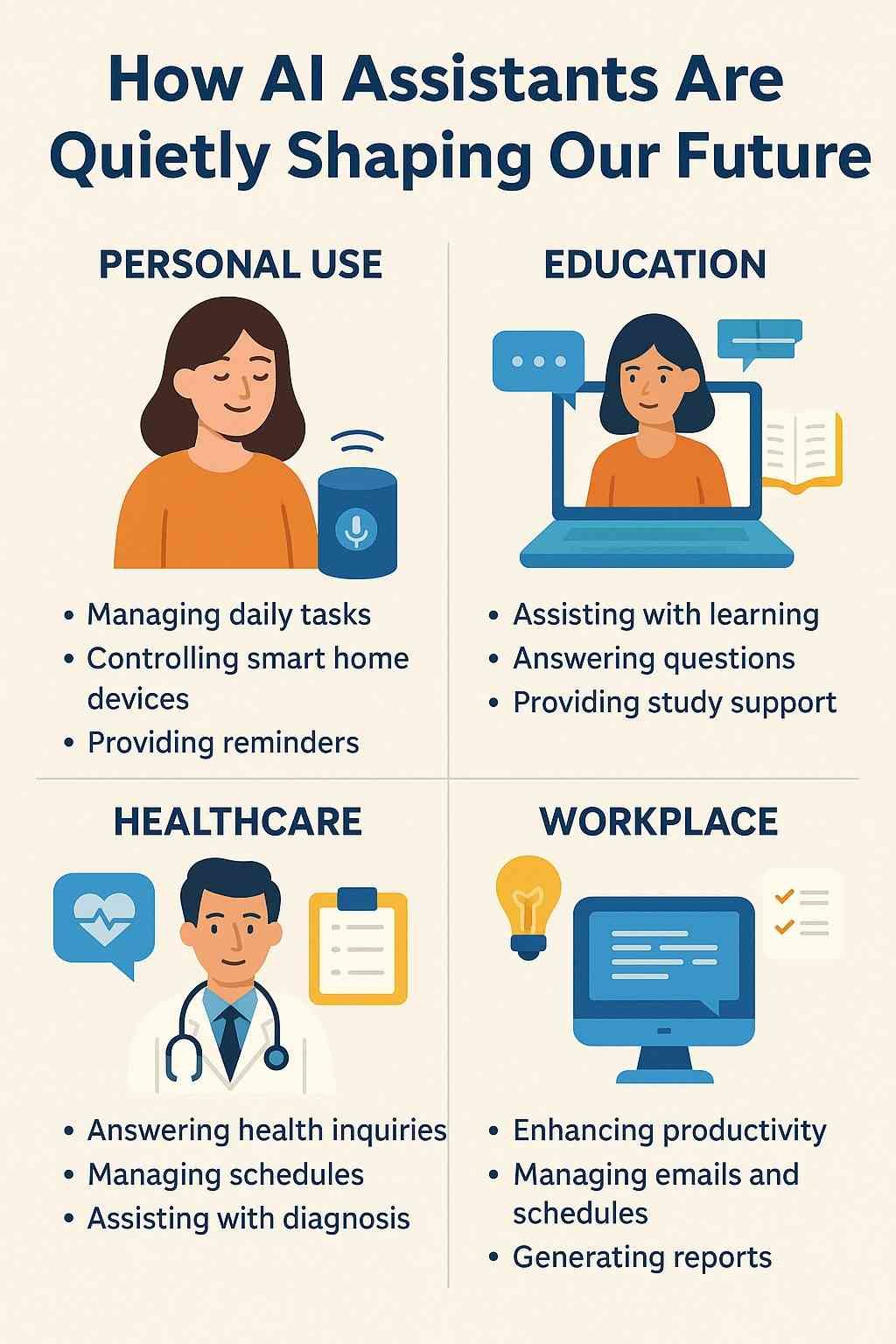
In Entertainment: Creating New Experiences
AI assistants are becoming part of how we enjoy movies, music, games, and social media. Many streaming platforms use AI to recommend songs, shows, or films based on your watching habits. These suggestions are not random—they are shaped by the assistant learning what you like over time.
For example, if you watch action movies on weekends, your assistant might suggest similar titles or even create a movie night reminder. Music apps do the same. They suggest new songs, create playlists, and adjust based on your mood or activity, like running or relaxing.
Gaming is also being shaped by AI. Some games have voice assistants that guide players, give tips, or adjust the game based on performance. AI is even helping to create realistic characters and stories inside the games. This makes entertainment more interactive and personalised.

Read about: How Does Technology Contribute to Badminton?
In Shopping: Helping with Smart Purchases
AI assistants are now helping people shop smarter. Many online stores have chatbots that guide you through buying steps. You can ask about deals, sizes, delivery times, or return policies, and the bot will answer.
Voice assistants can also help you shop. Saying “buy toothpaste” might add it to your cart or complete the purchase. These tools remember your past orders and suggest reordering before you run out of something.
Some assistants also track prices and notify you when a product becomes cheaper. This kind of help saves time, avoids extra spending, and makes online shopping more convenient.

In Travel: Planning and Guidance
AI assistants are also helping with travel planning. They can search for flights, book hotels, check weather updates, and remind you about travel documents. This removes the need to visit multiple websites or apps.
During travel, AI systems help with directions, traffic updates, and local attractions. Some smart cars have built-in AI that gives driving tips, suggests stops, or finds parking. This support makes travel smoother and safer.
AI is also used in airports and train stations to give information or guide people. Virtual kiosks with voice recognition answer questions about gates, boarding times, or lost items.

AI Assistants for People with Disabilities
One of the most powerful uses of AI assistants is helping people with disabilities. Voice assistants allow people who have trouble using screens to control devices, send messages, or call for help. This brings independence and confidence.
For people with vision problems, AI can describe the surroundings, read text aloud, or identify objects. Those who are deaf can use assistants with screen displays or get translations into sign language through visual tools.
These small changes make a big difference. AI assistants are not just gadgets—they are giving more access and support to those who need it most.
Read about: Adapting And Thriving: An Essential Guide To Disability Support Services
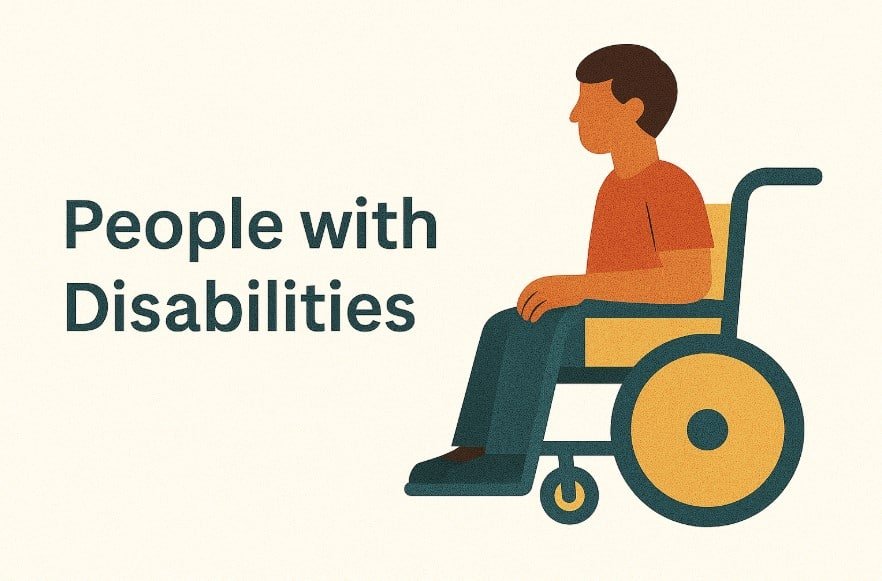
How AI Assistants Learn and Improve
AI assistants are not fixed systems. They continue to learn from every task they perform. They collect data from user interactions and get better at answering questions, making decisions, and suggesting actions.
This is called machine learning. Over time, the assistant understands your habits, voice tone, preferences, and even the best time to remind you of something. For example, if you always ask about the news in the morning, your assistant might start offering news updates without being asked.
This learning ability means AI assistants are becoming more useful every day. They are not perfect, but they improve as more people use them.
Check out: Why AI Engineers Now Need to Think Like Cloud Architects
Ethical Use and Responsibility
As AI assistants become more common, there is also more attention on ethics. How much should they know about you? Can they be trusted with private details? What happens if they make a mistake?
These questions are serious. Tech companies are now creating clear rules on AI usage. Users are given options to limit what is collected, and alerts are sent when the assistant is listening or recording. But it is still important for users to stay informed and cautious.
Some countries have introduced legal standards for AI use. This includes laws on data protection, consent, and AI transparency. In the future, we may see global rules for how AI assistants should act and how they can be controlled.
The Future of AI Assistants
Looking ahead, AI assistants are expected to become even more advanced. Future systems may understand emotions, speak in more natural ways, and act like personal guides in both real life and online.
We may see AI assistants that help in managing finances, making healthy meal plans, teaching new skills, or organising entire work projects. These assistants will be able to connect more deeply with other systems, from banks to schools, making life simpler.
Some believe that AI will become a partner in human decision-making, not just a helper. People will still be in charge, but AI will offer smart suggestions, reminders, or even early warnings for risks.
Voice, touch, and gesture-based control will become smoother. Assistants will respond quicker and sound more human. They may even work together across devices, so your phone, laptop, car, and home assistant will act as one team.
Challenges That Still Remain
While AI assistants have come far, some challenges remain. First, they still make mistakes in understanding accents, unclear speech, or unusual commands. Second, they sometimes give wrong or outdated information, especially when connected to the internet.
Another issue is fairness. AI systems sometimes reflect human bias from the data they are trained on. This can result in unfair or limited answers for people from different backgrounds. Developers are now working on creating more balanced and fair systems.
Lastly, some people may rely too much on AI and lose touch with real problem-solving. It is important to use assistants as a tool, not a replacement for thinking or learning.
Conclusion
AI assistants are becoming part of almost every area of life. They are helping people in homes, schools, hospitals, shops, and offices. Their work is often quiet and behind the scenes, but their impact is clear. From saving time to improving access and making services faster, AI assistants are shaping the future in small, steady steps.
They bring comfort, speed, and support—but they also need careful handling. As these systems grow smarter, users, developers, and leaders must work together to make sure they stay helpful, safe, and fair.
Understanding how AI assistants work today can help us prepare for the changes they will bring tomorrow. We are not just using tools—we are shaping a future where humans and AI work side by side.
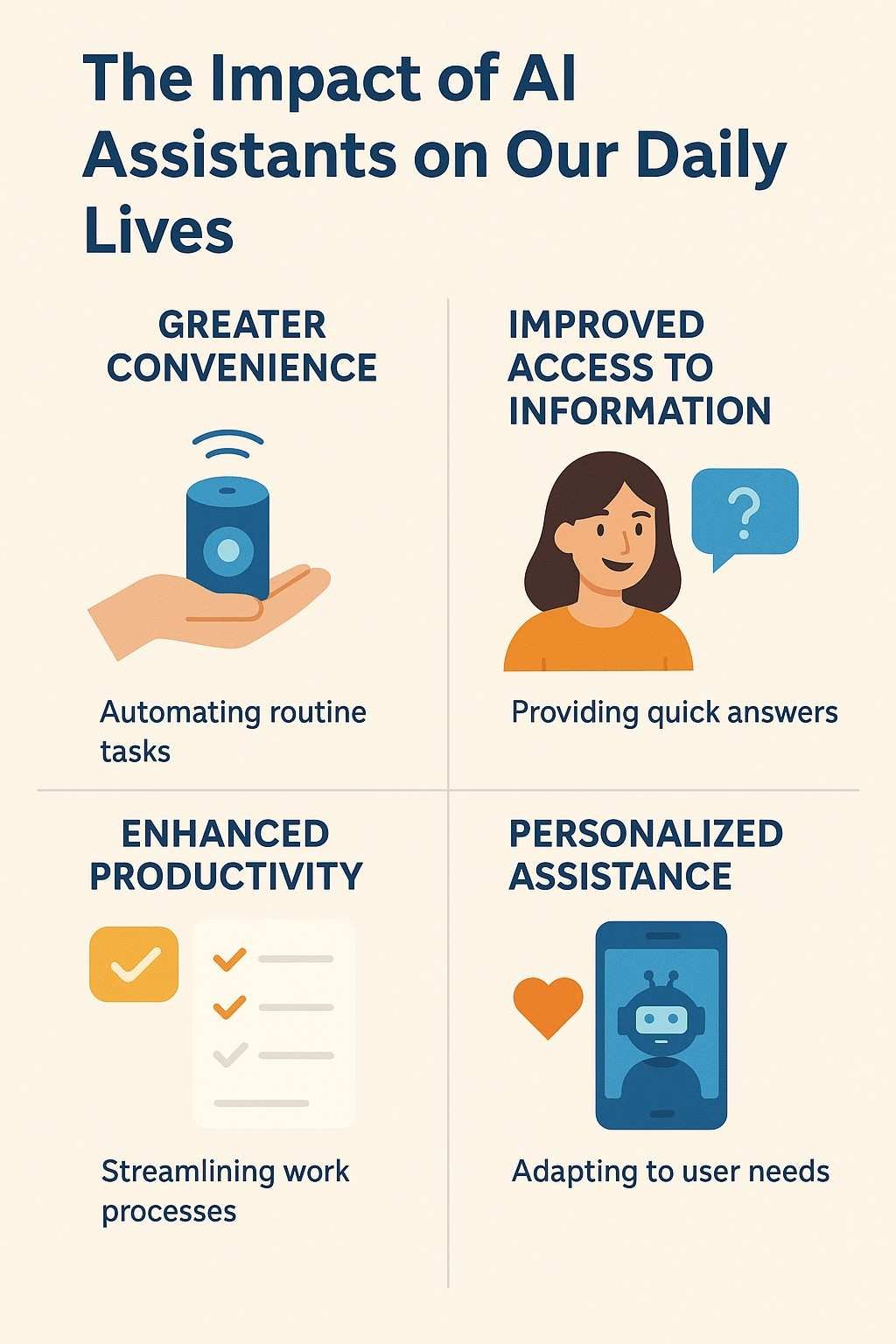
-

 Social Media2 months ago
Social Media2 months agoWhat the “67” TikTok Meme Really Means
-

 Tech2 months ago
Tech2 months agoWhat To Do When Your Business Faces Network Vulnerabilities
-

 Self Improvement2 months ago
Self Improvement2 months agoUsing BCBS Rehab to Access Quality Addiction Care
-

 Games2 months ago
Games2 months agoPusoy Strategies for Play That Also Work in Pusoy Dos in English






